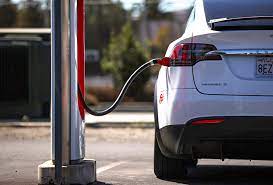As Tesla announces a new Megapack battery factory in Shanghai, the question arises about which country or region will dominate electric vehicle (EV) production in the coming decades. Tesla also recently announced a major factory in Mexico, and other EV firms have been looking to diversify their manufacturing locations, finally signaling greater competition in a market overwhelmingly dominated by China.
China has gradually been rising as an EV giant over the last decade, supporting government efforts to lead the green energy revolution. China now has around 300 commercially available EV models and is home to four of the world’s 10 largest battery manufacturers. And sales of EVs are also high in China, as the median price of an electric car is around 10 percent higher than a conventional car, compared to between 45 and 50 percent higher in other major markets. EV sales in China have increased from 1.3 million to 6.8 million over the last two years, compared to just 800,000 in the U.S.
Previous EV forecasts for China have repeatedly been too low, with the Asian giant growing at a rate that far exceeds industry predictions. And, for many, this dramatic growth seems to have come out of nowhere. But that’s not quite true, as China has been steadily developing its EV manufacturing potential and sales market for several years. Despite having an extremely strong manufacturing industry and producing a large number of conventional cars for export, there were previously no internationally well-known Chinese car brands. This is when China spotted the potential to become an EV powerhouse.
The Chinese government invested in wholly battery-powered vehicles at the nascent stage of technology development when EVs were seen as experimental, and their commercial potential was a distant reality. This went hand in hand with China’s aims to dominate the global green energy market and at the same time decrease its dependence on foreign energy sources as well as reduce air pollution. The Chinese government has poured huge amounts of funding into the EV market over the last decade, providing big subsidies and tax breaks for EV producers. China now dominates many of the industries supporting EV manufacturing, including lithium mining – producing around 60 percent of the world’s lithium – as well as battery and semiconductor manufacturing, producing 75 percent of all lithium-ion batteries.
Yet, despite China’s dominance in EV manufacturing and sales, some other countries are gradually developing their EV potential. While this will likely be at a smaller scale than in China, the development of new powerful EV markets could provide production hubs in other parts of the world to decrease dependency on China for the future of transportation. Mexico is quickly showing significant potential in the North and Latin American markets, having attracted significant investments from several well-known car makers. Companies such as Ford, GM, Audi, and BMW are investing in EV assembly facilities, and Tesla recently announced the development of a $5 billion Gigafactory in the north of the country.
Mexico is attractive for investors looking to develop North American supply chains, particularly thanks to the USMCA free trade agreement with the U.S. and Canada. And around 80 percent of the components required for EV manufacturing are made domestically, reducing reliance on international supply chains. EV production in Mexico is expected to reach 142,000 cars this year, compared to 78,000 in 2022, suggesting the scale of the growth. And while Mexico’s EV sales market is small at present, it is expected to grow rapidly over the next decade to see sales of 72,655 EVs nationally by 2030, up 2,000 percent from today.
As well as Mexico, other regional EV manufacturing hubs are emerging around the globe, as seen in the case of South Africa. Revenue from South Africa’s EV market is expected to reach $27.68 million in 2023 and grow at a CAGR of almost 30 percent between 2023 and 2027 to reach $79 million. In addition to increasing its EV sales, South Africa is expected to expand its manufacturing industry to include EV production. In 2020, the country’s automotive sector contributed around 4.9 percent of South Africa’s GDP and 27.6 percent of manufacturing output, with 2019 revenues totaling $35.6 billion, demonstrating the potential for expansion into the EV market.
The National Association of Automobile Manufacturers of South Africa has identified EVs as having major export potential and warns that South Africa could lose out on billions if it does not develop its EV manufacturing capacity. However, to date, the South African government has not established any subsidies or incentives to encourage EV manufacturing, which could deter companies from investing in the industry. Thanks to its well-established trade links with Africa and Europe, as well as its strong automaking industry, South Africa, could become a major EV production hub if the government creates policies to support market growth.
While China will almost certainly continue to dominate global EV production, following years of investment and development, several other countries are gradually developing their EV manufacturing potential. As countries worldwide look to establish more regional supply chains, to ensure the future of their energy security and support a green transition, countries such as Mexico and South Africa could benefit from the trend and become major EV production hubs.

 Iran Energy News Oil, Gas, Petrochemical and Energy Field Specialized Channel
Iran Energy News Oil, Gas, Petrochemical and Energy Field Specialized Channel



